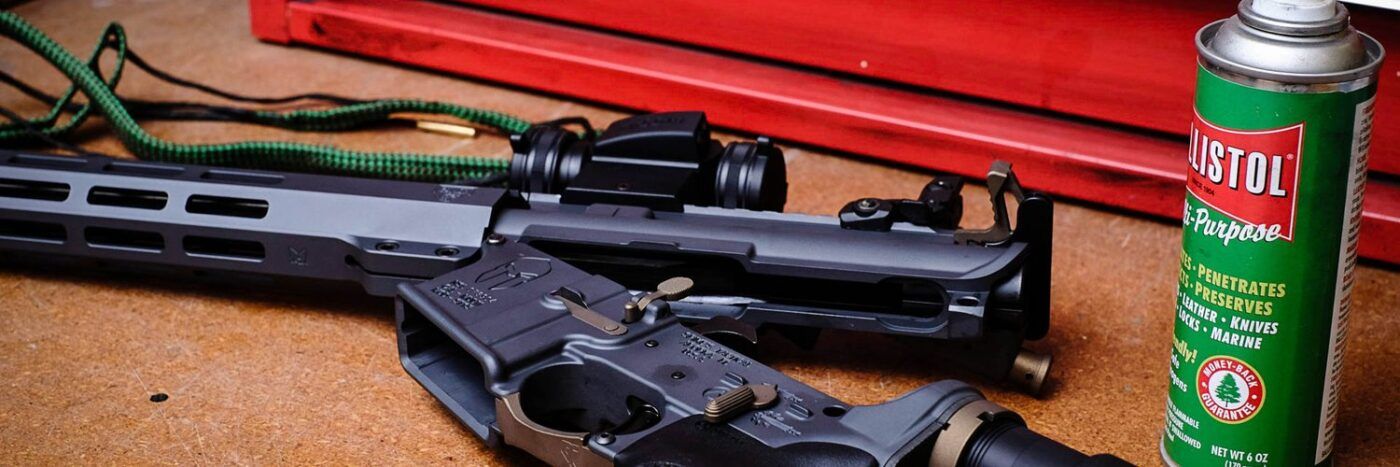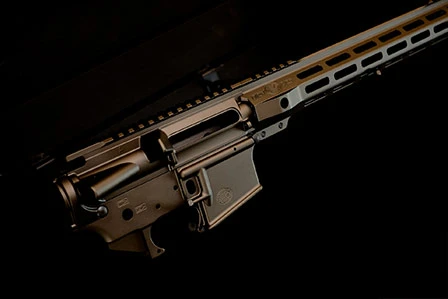AR Parts and Accesories, AR-15
Building vs. Buying an AR-15: Making the Right Choice in 2024
Building vs. Buying an AR-15 – The debate between building vs. buying an AR-15 from scratch or purchasing a prebuilt factory firearm has been a long-standing discussion within the firearms community. With an array of parts available and the ease of working on the AR platform, individuals often find themselves at a crossroads, uncertain of which path to choose. This article aims to shed light on the pros and cons of both options, offering guidance for those grappling with this decision.
Building vs. Buying an AR-15 – Buying a Pre-Built AR-15
One of the most straightforward approaches to acquiring an AR-15 is to buy a pre-built firearm directly from a manufacturer or a gun shop. When you opt for this route, all the assembly, parts selection, troubleshooting, and quality control are handled by professionals before the firearm reaches your hands. Here are the key advantages and disadvantages of buying a pre-built AR-15:
Pros:
Manufacturer’s Warranty: Pre-built firearms come with the assurance of a manufacturer’s warranty, offering peace of mind in case of defects or issues. This warranty is a significant advantage as it ensures that you have recourse in case something goes wrong with your firearm. Knowing that the manufacturer stands behind their product can be invaluable.
Quality Control: These guns are built to industry standards and undergo rigorous quality control processes, reducing the likelihood of malfunction. Quality control is an essential aspect of pre-built firearms. Manufacturers have the resources and expertise to ensure that every component meets the required specifications. This level of scrutiny often results in a reliable and well-functioning firearm.
Ready-to-Use: Pre-built AR-15s are ready to use right out of the box, requiring minimal adjustments or fine-tuning. This is especially appealing for those who want a firearm for immediate use, whether it’s for personal defense, recreational shooting, or hunting. With a pre-built firearm, you can hit the range or field without the need for extensive assembly or modification.
Cons:
Limited Customization: Buying a pre-built firearm locks you into the configuration chosen by the manufacturer, making it challenging to customize without additional expenses. While pre-built firearms offer convenience, they may not perfectly match your specific preferences. You might find yourself wanting to change certain components, such as the stock, handguard, or trigger. However, modifying a pre-built firearm often means additional costs, and you may still be limited by the manufacturer’s design choices.
Quality Variations: The quality of pre-built firearms can vary depending on the manufacturer, with some prioritizing quantity over quality. It’s crucial to research and choose a reputable manufacturer known for producing reliable firearms. While many reputable companies maintain strict quality control standards, others may prioritize mass production, potentially resulting in variations in quality. Therefore, it’s essential to do your due diligence and read reviews or seek recommendations to ensure you’re investing in a trustworthy product.
Availability and Demand: High demand for firearms in recent times has occasionally led to shortages and delays in obtaining pre-built AR-15s. The firearm industry often experiences fluctuations in demand due to various factors, such as legislative changes, social concerns, or economic conditions. During times of increased demand, it may be more challenging to find the specific pre-built AR-15 you desire, potentially requiring patience and persistence.
Building vs. Buying an AR-15 – Building Your Own AR-15
Building your own AR-15 offers the ultimate customization and control over the final product. However, it comes with its own set of challenges and considerations. Here are the key factors to weigh when deciding to build your AR-15:
Pros:
Tailored to Your Needs: Building allows you to select every component, tailoring the firearm to your specific requirements and preferences. One of the most significant advantages of building your AR-15 is the level of customization it offers. You have the freedom to choose each part, from the upper and lower receiver to the barrel, handguard, trigger, and more. This level of customization ensures that the final product aligns precisely with your intended use and preferences.

Potential Cost Savings: With careful part selection and patience for sales, building your AR-15 can sometimes cost less than purchasing a factory gun. While customization is a primary motivation for building, cost savings can also be a compelling factor. By diligently researching and hunting for deals, you may find that building your AR-15 can be more cost-effective than buying a pre-built firearm. Savvy builders often wait for sales or promotions to acquire components at a lower price, making the overall investment more budget-friendly.
In-Depth Understanding: Assembling your firearm provides a deep understanding of the platform, enhancing your ability to maintain, modify, and troubleshoot it. Building your AR-15 is a hands-on learning experience that can significantly increase your knowledge and confidence with firearms. You’ll gain insights into how each part functions within the system, the principles of operation, and the nuances of assembly. This knowledge can be invaluable for future maintenance, upgrades, or troubleshooting.
Cons:
Investment in Tools: When considering building vs. buying an AR-15, tools are a huge consideration. Building an AR-15 requires an investment in specialized tools, including a vice, clamshell block, torque wrench, and more, adding to the overall cost. Building your AR-15 correctly necessitates the use of specific tools designed for firearm assembly. While these tools ensure precision and safety, they also represent an additional financial commitment. Depending on the quality and quantity of tools needed, you may need to allocate a minimum of $500 to ensure you have the necessary equipment for a successful build.
Technical Knowledge: You must possess the knowledge and expertise to properly assemble and troubleshoot the firearm, potentially requiring assistance or guidance. Building your AR-15 demands a degree of technical know-how. Building vs. buying an AR-15 means ou’ll need to understand various aspects of the platform, such as gas systems, torque values, and compatibility between parts. Additionally, troubleshooting skills are essential in case issues arise during assembly or usage. While there are abundant online resources and communities willing to offer guidance, having a foundation of technical knowledge is crucial for a smooth building experience.
Time Commitment: building vs. buying an AR-15 demands time and patience, from parts selection to assembly and troubleshooting. Patience and dedication are prerequisites for building your AR-15. The process involves researching and selecting compatible components, waiting for parts to arrive, and dedicating time to the assembly process. Building your firearm should not be rushed, as attention to detail and precision are paramount. Be prepared for a time commitment that extends beyond simply purchasing a pre-built firearm.
Tools and Knowledge are Crucial
Whether you choose building vs. buying an AR-15, having the right tools and knowledge is crucial to the success of your AR-15 endeavor. Improper assembly can lead to issues, such as stripped threads or misaligned parts. Here are some considerations:
Tools: When building vs. buying an AR-15 Investing in quality tools is essential, with a minimum investment of approximately $500 for necessary equipment. These tools ensure proper assembly and reduce the risk of damage. While the initial investment in tools may seem significant, they are essential for building your AR-15 safely and effectively. High-quality tools not only improve the assembly process but also contribute to the longevity and reliability of your firearm.
Technical Knowledge: When building vs. buying an AR-15, understanding the intricacies of gas systems, torque values, and compatibility between parts is vital. Ensure you know how to identify and address common assembly issues. Building your AR-15 demands a fundamental understanding of various technical aspects. Familiarize yourself with concepts such as gas system lengths, barrel specifications, gas block sizing, and how they influence the overall function of the firearm. Additionally, be prepared to troubleshoot issues that may arise during assembly or use.
Troubleshooting: Be prepared to troubleshoot any problems that may arise during assembly, and know when to seek assistance if needed. Building your AR-15 can be a rewarding experience, but it also comes with the potential for challenges. Be proactive in identifying and addressing issues, whether related to fitment, alignment, or functionality. Don’t hesitate to reach out to knowledgeable individuals or online communities for guidance when troubleshooting.
Conclusion
Building vs. buying an AR-15 depends on your individual preferences, needs, and circumstances. Consider the availability of complete firearms, your level of technical knowledge, the investment in tools, and your desire for customization. While building your AR-15 can be a rewarding journey, it requires careful planning and a commitment to quality and precision. Ultimately, your decision should align with your goals and your willingness to invest both time and resources into your firearm project.
 Dirty Bird Brand AR-15 Parts
Dirty Bird Brand AR-15 Parts